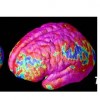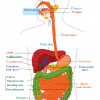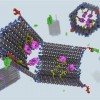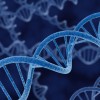Why no cure for cancer?
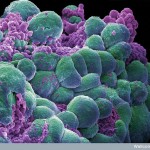 I was looking through some of the comments on the blog and thought I would address a few of them, as I imagine others would have similar questions. One reader wanted to know why some cancers are more fatal than others. For example, the five-year survival rate for prostate cancer is nearly 99%, while it is 4% for pancreatic cancer. There are several reasons for this. First, some cancers are by nature slow growing and unlikely to spread through the body, like prostate cancers, while other cancers are very aggressive and often metastasize. Another issue is diagnosis: there are good diagnostic tools for some cancers, which allows doctors to identify them early enough to allow treatment, while other cancers are difficult to detect until treatment is unlikely to work. Finally, some cancers can be treated, while others are very difficult to treat. This can be because of the nature of the tissue. For instance, some thyroid cancers can be “cured” by completely removing the thyroid. This is possible because we can replace thyroid hormone easily. Similarly, skin cancers can often be cured by cutting out the affected skin. It is much more difficult or impossible to remove other tissues- for instance, parts of the brain. Cancers in different tissues also have distinct molecular changes to their DNA. This means that they respond differently to therapeutics. For some cancers, these are very effective, while others don’t respond.
I was looking through some of the comments on the blog and thought I would address a few of them, as I imagine others would have similar questions. One reader wanted to know why some cancers are more fatal than others. For example, the five-year survival rate for prostate cancer is nearly 99%, while it is 4% for pancreatic cancer. There are several reasons for this. First, some cancers are by nature slow growing and unlikely to spread through the body, like prostate cancers, while other cancers are very aggressive and often metastasize. Another issue is diagnosis: there are good diagnostic tools for some cancers, which allows doctors to identify them early enough to allow treatment, while other cancers are difficult to detect until treatment is unlikely to work. Finally, some cancers can be treated, while others are very difficult to treat. This can be because of the nature of the tissue. For instance, some thyroid cancers can be “cured” by completely removing the thyroid. This is possible because we can replace thyroid hormone easily. Similarly, skin cancers can often be cured by cutting out the affected skin. It is much more difficult or impossible to remove other tissues- for instance, parts of the brain. Cancers in different tissues also have distinct molecular changes to their DNA. This means that they respond differently to therapeutics. For some cancers, these are very effective, while others don’t respond.
Another reader wanted to know why there are cures for other diseases, but not for cancer. There are many reasons for this, of which I’ll mention a few. First, cancers are the result of our own cells acting abnormally. This means that many of the treatments we might want to use to kill cancer cells would also kill our normal cells. The challenge is to identify the differences between our normal cells and their cancerous relatives and then to identify weaknesses in the cancer cells. This in itself is very difficult. However, it is much more difficult because cancers are not all the same. As I mentioned above, cancers in different tissues arise by distinct changes, so a drug for one cancer may have no effect on another. Even worse, different cancers within a particular tissue are different. In fact, within one tumor, the different cells can have different mutations, and these can affect how the cells respond to therapy or allow the cancer to develop drug resistance. So, cancer isn’t just one disease- it is many related diseases. In fact, calling for “a cure” for cancer isn’t really fair; what will be needed are many cures for this family of diseases.
I know I’ve probably produced more questions than answers, but I hope that this helps some of you.
| Print article | This entry was posted by admin on August 5, 2010 at 11:52 am, and is filed under Inside Cancer. Follow any responses to this post through RSS 2.0. You can skip to the end and leave a response. Pinging is currently not allowed. |



